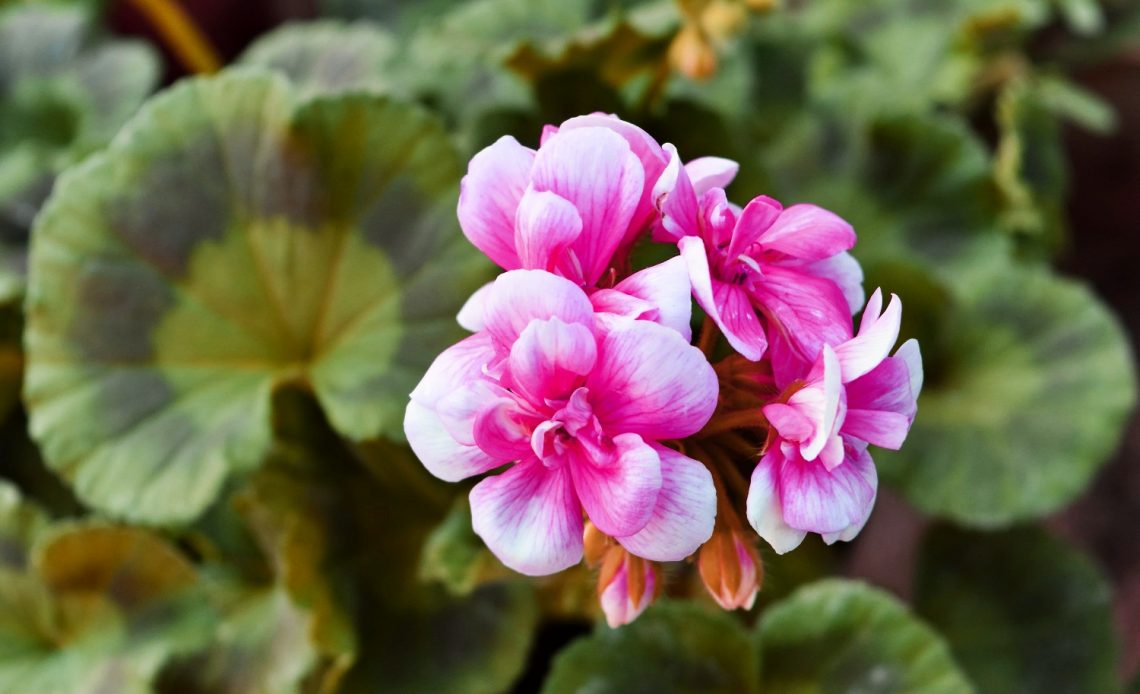

We’re here to help! Wild Yards is a completely free website that is 100% dedicated to helping you create a wildlife-friendly, sustainable yard. Read more
WildYards is reader-supported. When you buy a product through a link on our site, we may earn a comission. Every product is independently selected by our (obsessive) editors and our reviews are unbiased and objective. Read more about our mission or our privacy policy.
Vibrant flowers with a distinctive scent, geraniums are generally very easy keepers, growing just as well in window boxes and decorative pots as they do in flower beds. But even though these flowers are mostly low-maintenance, they can still run into some problems. If you’ve noticed your geranium leaves turning yellow, you’re probably wondering what’s causing the foliage to change colors, and what you can do to restore your plant’s health.
When geranium leaves turn yellow, it’s usually due to an underlying nutritional deficiency. But overwatering the plant can also contribute to yellowing foliage, as can underwatering. Other possible causes include fungal infections, insufficient sunlight, and improper soil conditions.
10 Reasons why geranium leaves turn yellow, and solutions that actually work
A geranium’s leaves can turn yellow for a variety of reasons. In order to successfully treat your plant, the first thing you need to do is correctly identify the underlying cause. To help you get to the bottom of your geranium’s yellowing leaves, here’s a list of potential causes, plus what you can do to treat your geranium to restore its health.
The problem: nutritional deficiencies
When your geranium’s leaves turn yellow, the first thing you should suspect is a nutritional deficiency. Different nutritional deficiencies affect plants in different ways. Take a closer look at your geranium to determine if its symptoms match the following nutritional imbalances.
- Zinc deficiency causes new geranium leaves to turn yellow in between the veins.
- Potassium deficiency causes geranium leaves to turn yellow and brown on the tips before the whole leaf turns brown
- Magnesium deficiency shows up in mature leaves. The leaves will turn yellow along the edges and in between the leaf’s veins.
- Nitrogen deficiency is a common ailment for many plants and results in stunted growth. Plants with low nitrogen will develop yellow leaves with brown tips that eventually die and drop off.
If you’ve planted your geranium in nutrient-poor soil, then it’s possible that it’s suffering from multiple vitamin and/or mineral deficiencies at once. The more nutrient deficiencies your plant has, the poorer its prognosis and the faster you’ll need to act. Use an at-home soil test kit to determine your soil’s pH and to figure out where the nutrient levels stand. This will help you take the appropriate steps moving forward.
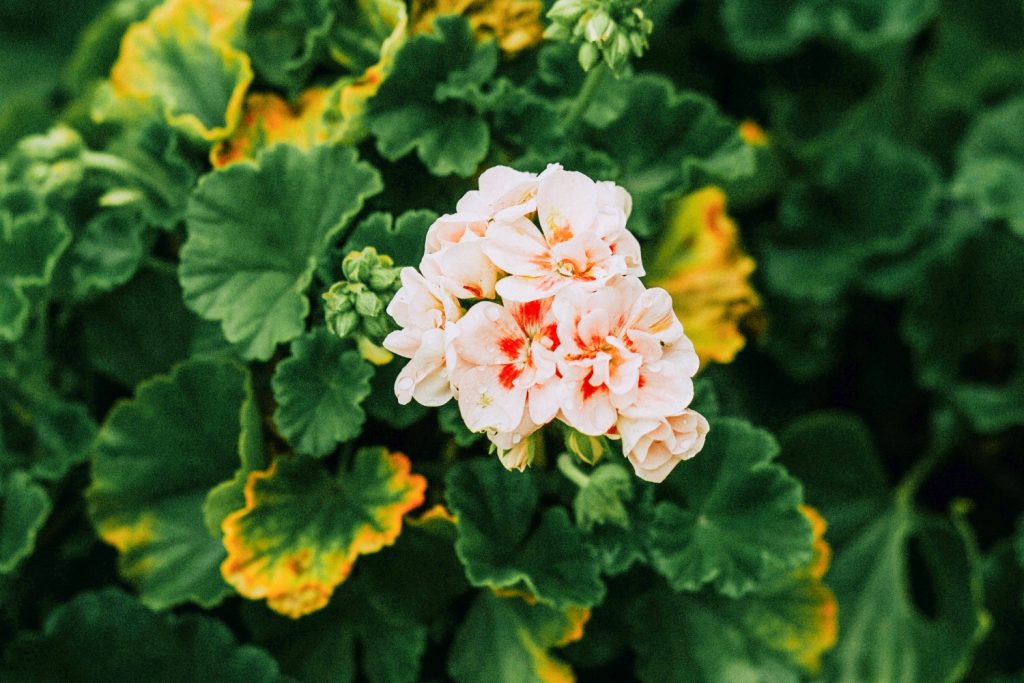
The solution: supplement the missing vitamins and/or minerals
Once you’ve determined which nutrients your geranium is missing, you can amend the soil properly to correct the problem.
- Zinc deficiency — Zinc-only fertilizers are available to help your geranium’s yellow leaves. Chelated zinc is easiest for geraniums to absorb, so it’s the best choice.
- Potassium deficiency — Kelp meal is one of the most readily available sources of potassium for plants. Apply 1 or 2 tablespoons of kelp meal per gallon of soil.
- Magnesium deficiency — If your geranium leaves are turning yellow due to a magnesium deficiency, Epsom salts are a quick and easy fix. Simply dissolve 2 tablespoons of Epsom salts into a gallon of water and use this to feed your geraniums.
- Nitrogen deficiency — Aged horse, cow, and chicken manure are all excellent sources of nitrogen. Coffee grounds and homemade compost are also great choices.
Once nutrient levels have improved, your geranium should show signs of improvement within a week or two. Be sure to test the soil again in a month to determine whether or not you need to apply additional fertilizers.
The problem: overwatering
Another common cause behind geranium leaves turning yellow is overwatering. If your geraniums are planted in the ground and your region has seen excessive rainfall, then that’s the most likely cause of the plant’s yellowing foliage. However, geraniums that are planted in pots that don’t have holes in the bottom can become waterlogged, too. If your geraniums leaves are turning yellow, stick your finger in the soil to test the moisture level. If the ground is super soggy, then your geraniums are probably over-hydrated.
The solution: turn off the hose
Geraniums are tolerant of moist soil, but muddy soils prevent air from reaching the roots, leading to yellow leaves. If your geraniums are turning yellow because of excess hydration, scale back on the watering. Allow the soil to dry out and give the plant a chance to breathe. If your geraniums are growing in pots, drill holes in the bottom to allow water to escape. Consider adding a layer of rocks to the bottom to prevent the holes from getting clogged with soil. If your geraniums are planted in the ground, try amending the soil with sand, gravel, or a mixture of porous, aerating materials, like those used to create potting soil for lavender.
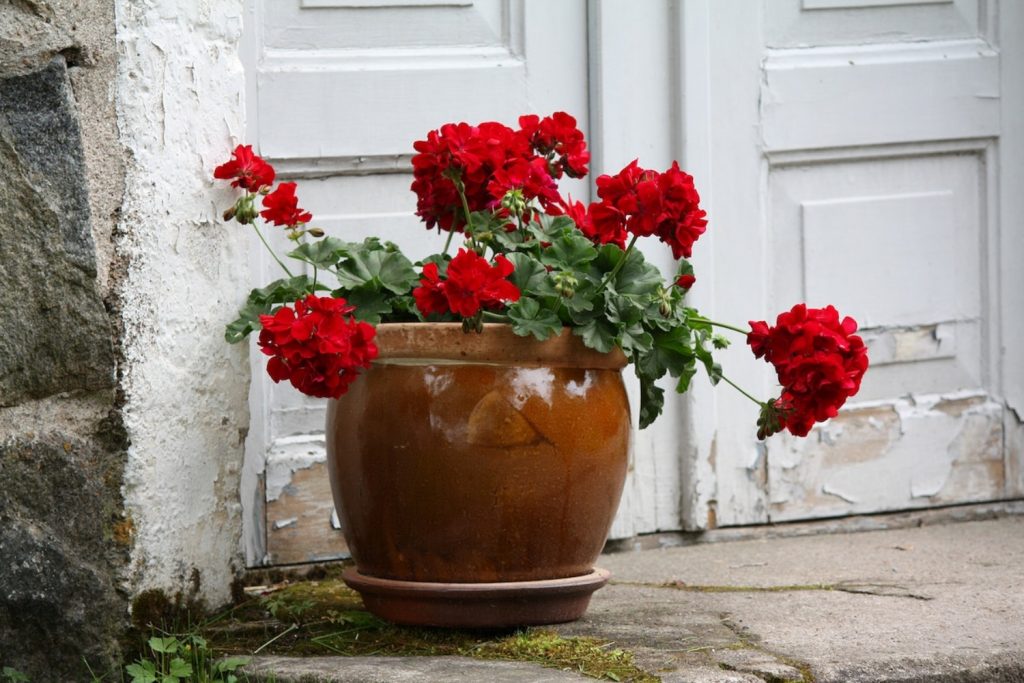
The problem: underwatering
Overwatering can cause geranium leaves to turn yellow, but underwatering can have similar effects. While geraniums are drought-tolerant once established, they can still get parched, especially in warmer climates. If your geranium’s leaves are turning yellow and their soil feels dry to the touch 2 to 3 inches below the surface, there’s a good chance the plant is thirsty.
The solution: give those geraniums a drink
If your geraniums need more water, then water ‘em! Geraniums need water to photosynthesize. Without it, they can’t produce energy, and their leaves turn from green to yellow. Water your geranium plants 3 to 5 times a week, and remember, a few deep waterings are much better for these plants than multiple small waterings.
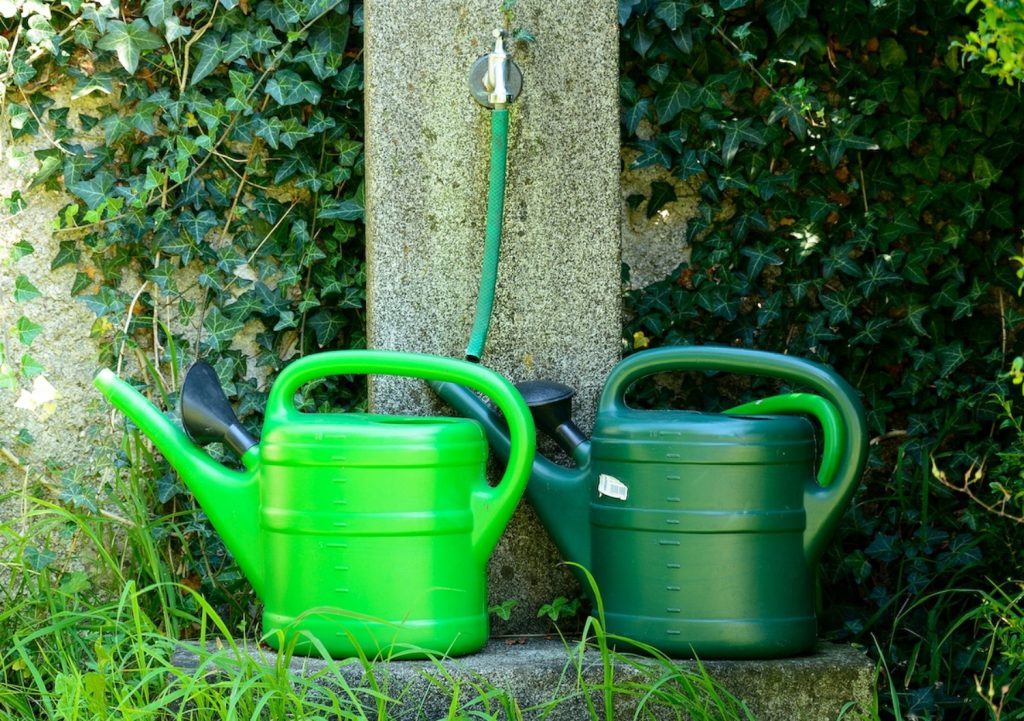
The problem: fungal infection
Geraniums are pretty hardy. But they can be susceptible to certain diseases, like pelargonium rust, which causes leaves to turn yellow and develop brown spots. Bacterial leaf spot also results in yellow leaves, but with water-soaked spots. Gray mold, or botrytis blight, is another fungal infection commonly seen in geraniums. Plants with gray mold turn yellow and develop brown and black spots.
The solution: pruning and fungicide
If your geraniums are suffering from a fungal infection, use garden shears to trim away affected portions. Use 70% isopropyl alcohol to wipe down the shears in between cuts to avoid spreading the infection to healthy parts of the plant. Be sure to toss the trimmings into the garbage instead of adding them to your compost. Once your geranium has been pruned, apply a fungicide to neutralize wayward spores and prevent the infection from returning. Improving drainage and ensuring your geraniums get enough sunlight will also help ward off fungal infections.
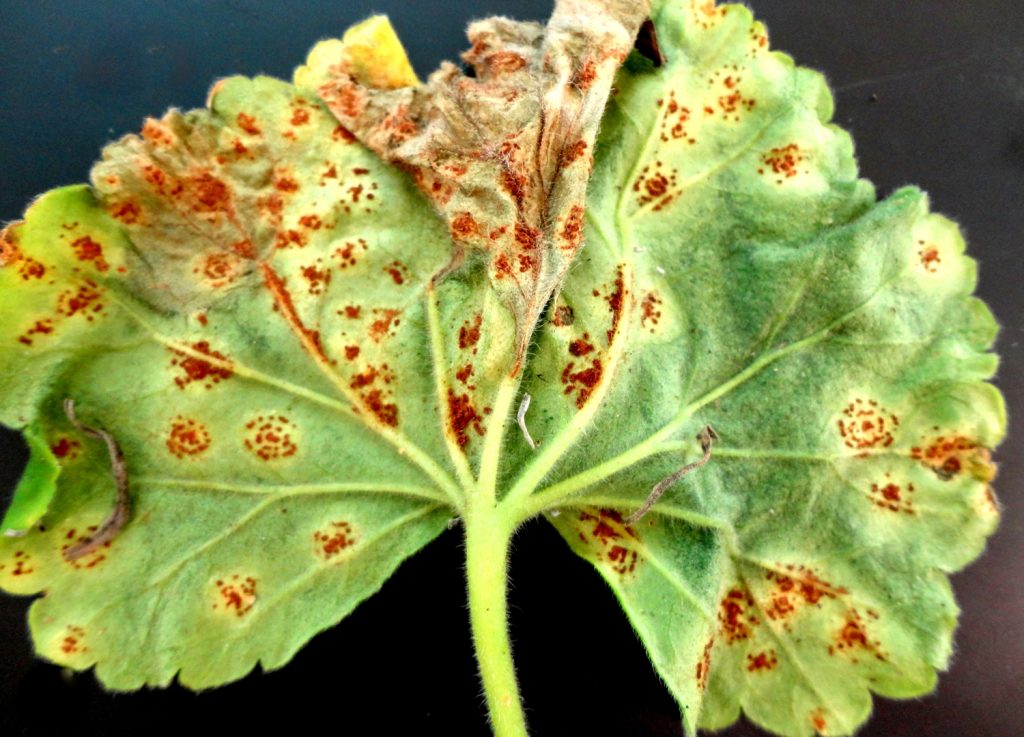
The problem: insufficient sunlight
Geraniums need 6 to 12 hours of direct sunlight every day to maintain green foliage and produce flowers. In hotter climates, geraniums may need less sunlight, and in cooler regions, they may need more. If your geraniums are sitting in a shady location, the lack of sun could be contributing to their anemic appearance.
The solution: move your geraniums to a sunny location
If your geraniums are planted in pots, simply move them to a sunnier location and give them some time. Within a week or so, the leaves should perk back up. If your geraniums are planted in the ground, trimming surrounding trees to allow more light in may help. But if that’s not an option, then it’s time to transplant them to a new location.
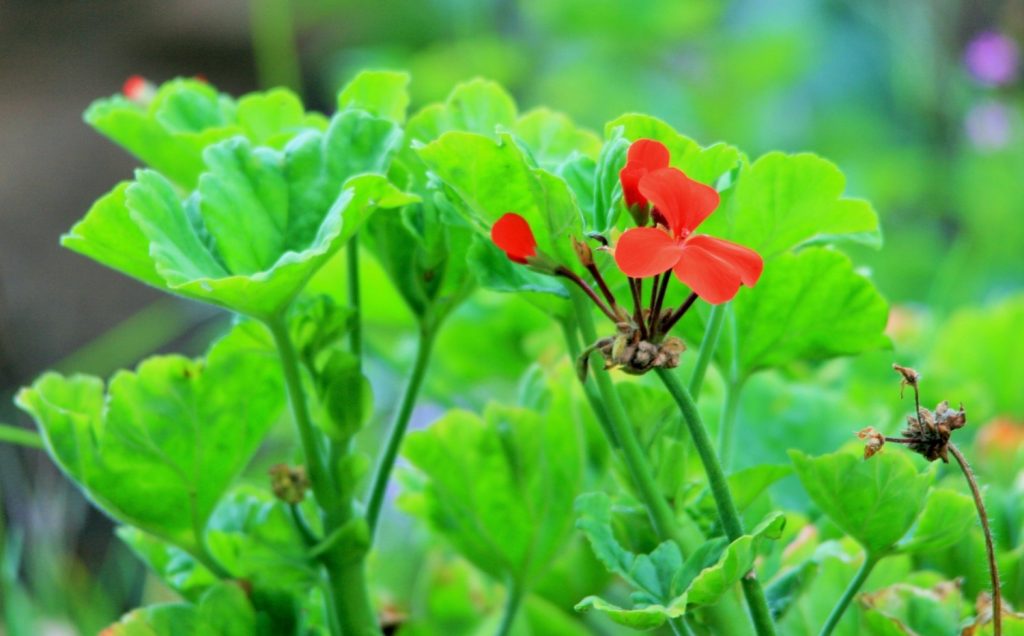
The problem: too much sunlight
If your geraniums are getting more sunlight than they can take, that can also cause the leaves to turn yellow. This generally happens in the southern portion of the United States, where geraniums prefer some afternoon shade.
The solution: move your geraniums to a shady location
If your geraniums need a break from the sun’s harsh rays, move them to a shady location. Stick potted geraniums on the east side of a tree, where they’ll get morning sun and afternoon shade. And transplant in-ground geraniums to a less sunny location to green up their foliage.
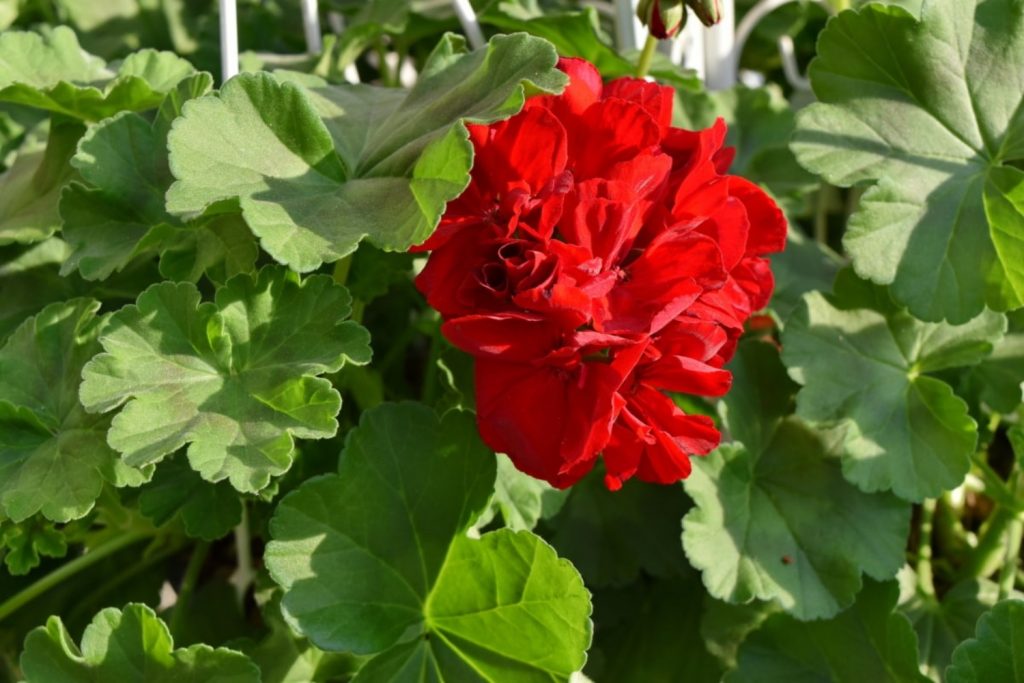
The problem: wrong soil
Geraniums grow best in somewhat acidic soils with a pH of 5.8 to 6.5. Sandy loam soils that are full of decaying organic materials are ideal, but most potting soil mixes work well, too. Because geraniums are heavy feeders when in bloom, they need rich soil. They also need their soil to drain well. If the soil your geraniums are planted in doesn’t meet these requirements, that can certainly cause their leaves to turn yellow.
The solution: amend the soil
Examine your geranium’s soil closely. Is it clay-rich or mostly sand? Does it hold moisture well or does water run off quickly? Is the soil hard and compacted or full of degrading plant matter? Use compost, sand, and gravel to add nutrition to the soil, aerate it, and improve drainage. This will help turn your geranium’s foliage green again.
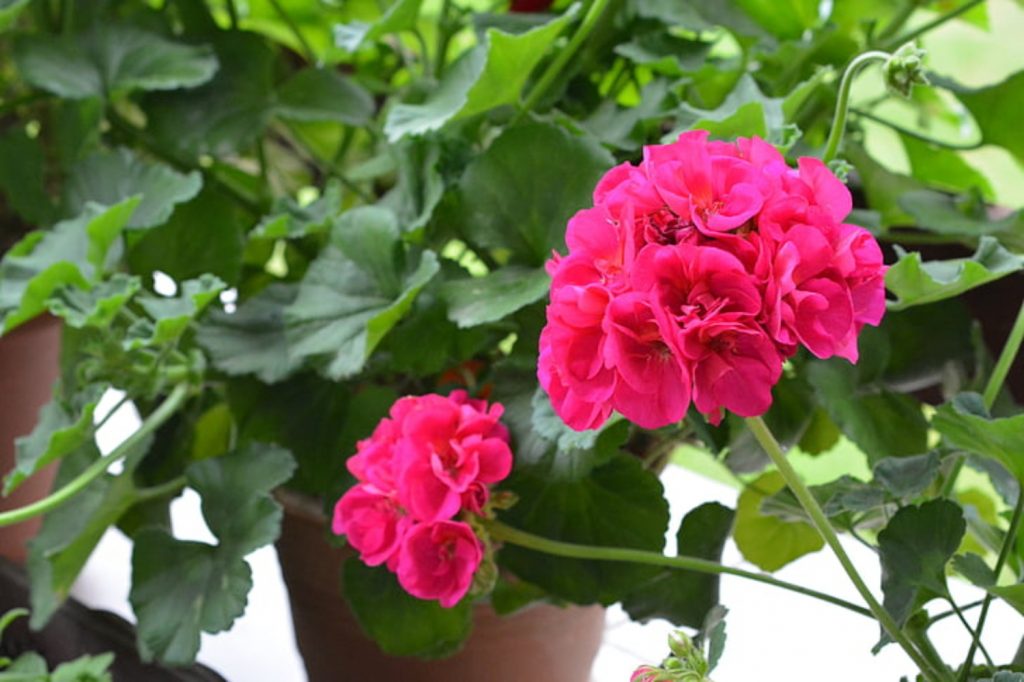
The problem: cold climate
Geraniums grow best in temperate climates. They don’t really like hot weather, but they prefer warm temperatures between 65 and 80 degrees. If your region’s climate stays around 50 degrees or cooler, it may be too cold for them to grow well, and their foliage may fade and turn yellow.
The solution: warm things up
If it’s too cold for your geraniums to thrive outside, your best bet is to move them indoors and situate them in front of a sunny window. If your geraniums have been living outdoors, it’s perfectly safe to transplant them into pots and move them into your home. Once the temperature improves to your geranium’s liking, it won’t take long for new green leaves to emerge.
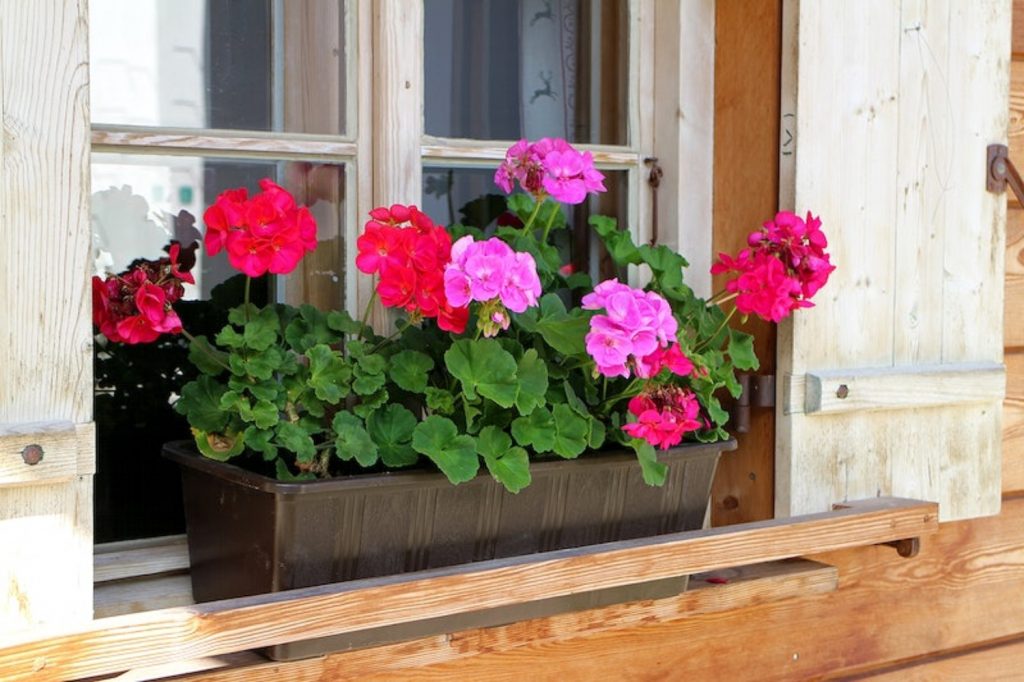
The problem: hot climate
Temperatures in the 90s and 100s can also cause your geranium leaves to turn yellow. Extremely hot weather leads to moisture loss, and sometimes that moisture loss is so extreme that moving the geraniums to a shadier spot and watering them more frequently isn’t enough to improve their health.
The solution: cool things down
Try moving your potted geraniums to your porch or patio. Moving them to a covered deck will keep them off the ground, so the warm earth doesn’t heat up the pots. The extra shade will also help cool things down. If, after all of this, you find your geraniums still haven’t perked up, then move them indoors where you can adjust their environment to better suit their needs.
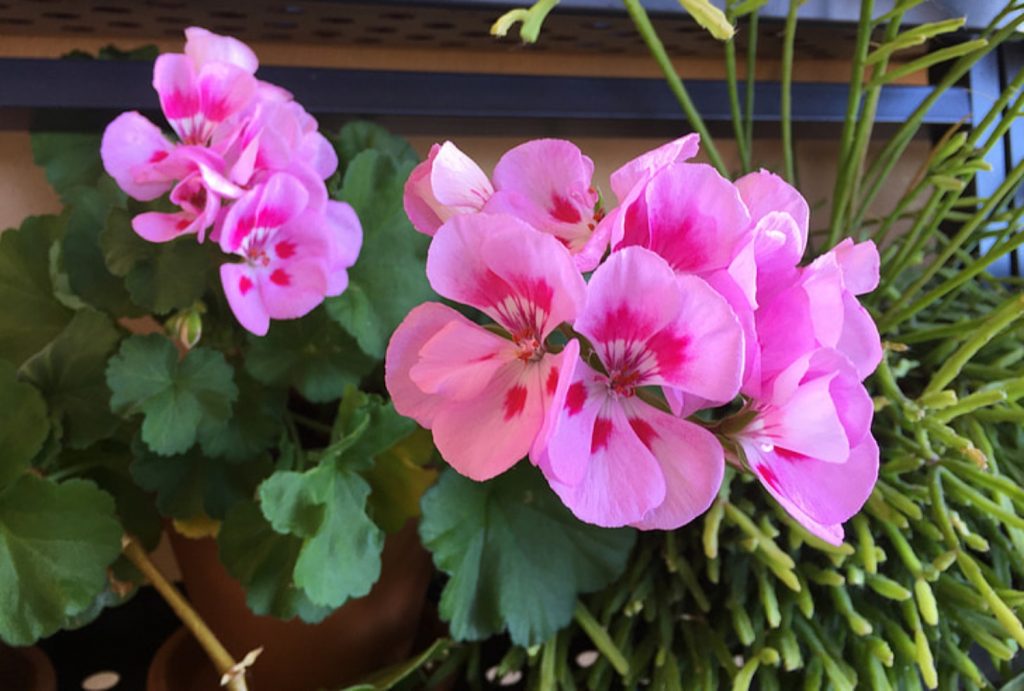
The problem: chemical burn
Nitrogen-rich fertilizers like 30-0-10 and harsh chemical herbicides can burn your geranium’s leaves, causing them to turn yellow shortly after contact. Even if you haven’t applied these chemicals to your geraniums, if you’ve applied them to surrounding plants, a light breeze can carry the chemicals to your geraniums, causing the leaves to yellow quickly.
The solution: avoid using chemicals on your geraniums
If your geraniums are growing in the ground and you need to spray chemicals onto surrounding plants, use plastic contractor’s cloth to cover the foliage first. If your geraniums are in pots, simply move them away before applying chemicals to neighboring plants. Always read the instructions before applying fertilizer, herbicide, fungicide, or insecticide.
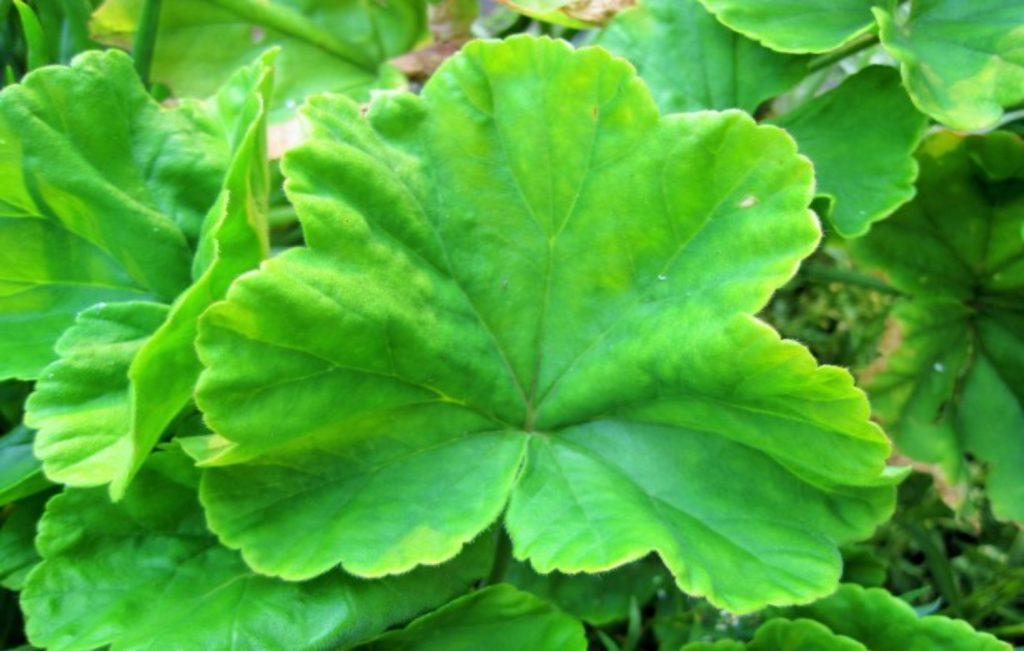
Will a geranium plant’s yellow leaves turn green again?
Once a geranium’s leaves have turned yellow, they won’t turn green again. If only the tips of a leaf are yellow and the rest is green, then the plant can still use it to photosynthesize. It doesn’t hurt the plant to leave these mostly-green leaves attached and depending on how yellow the rest of the plant’s foliage is, it may actually rely on these leaves to survive.
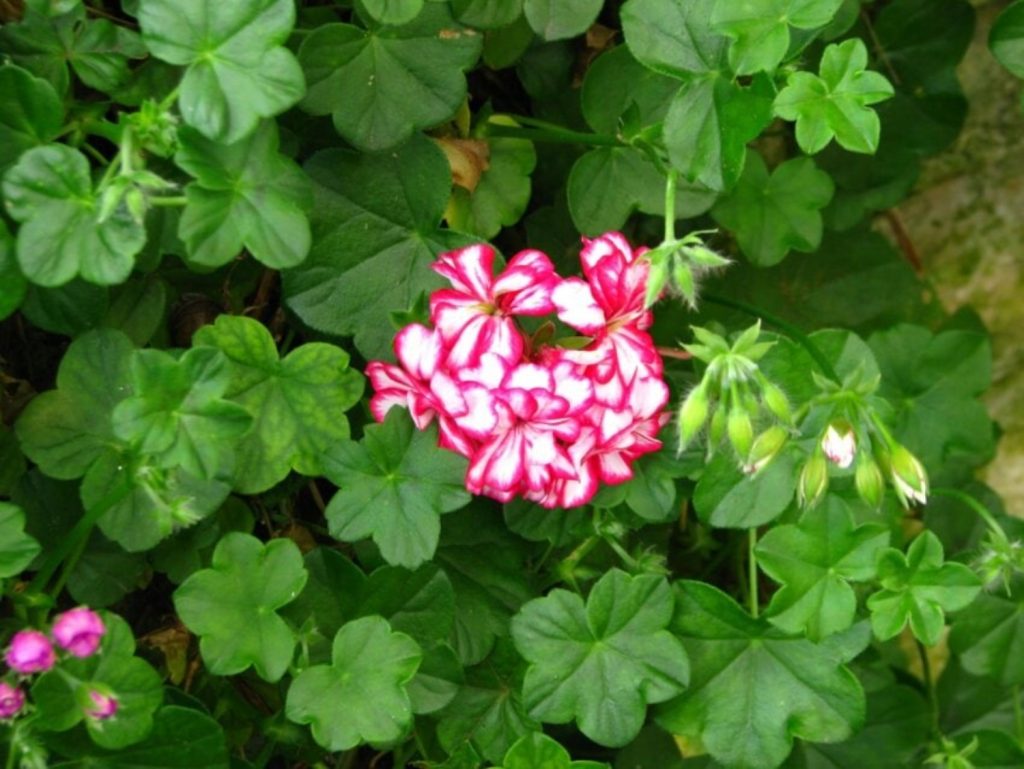
Should you prune yellow leaves off of your geraniums?
If your geraniums have a handful of leaves that are totally yellow, then it’s okay to trim them away. They make the plant look scraggly, they trap moisture and prevent air from circulating, and the plant can’t really use them anyway. So feel free to pluck your geranium’s yellow leaves off. This will also help revive the plant and encourage it to produce new leaves.
More tips for preventing yellow geranium leaves
The best way to prevent geranium leaves from turning yellow is to meet all of the plant’s growing requirements. Test the soil regularly so you can choose the appropriate fertilizer, check the soil before watering to make sure the plant actually needs a drink, and keep a close eye on its appearance so you can tackle yellowing foliage early on. By being proactive, you can keep your geraniums healthy and growing nice and green.
